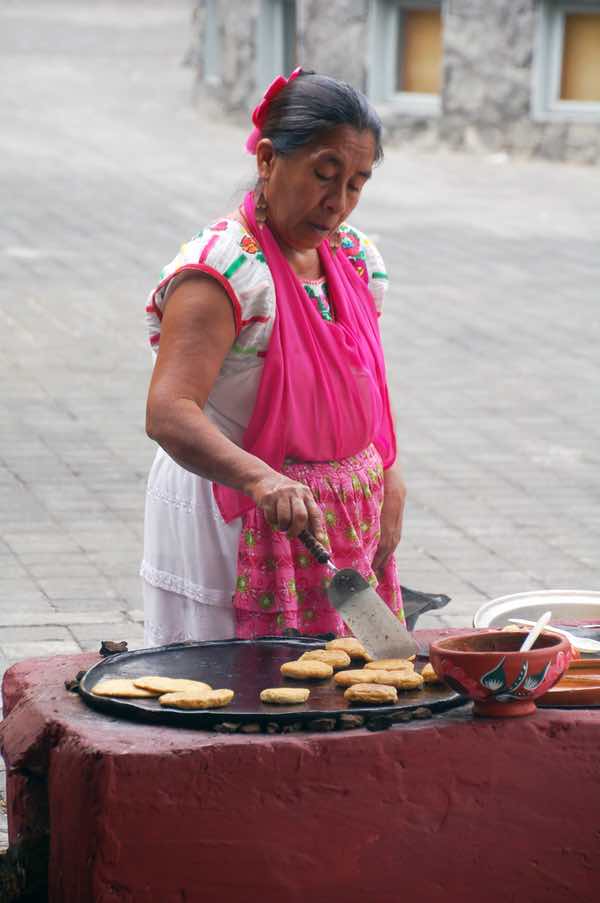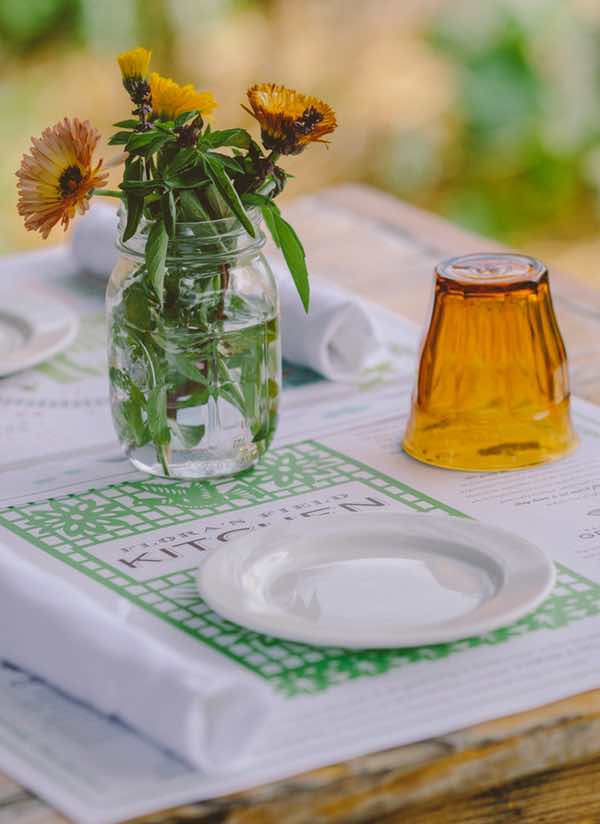[page_title]
[post_date]
Tales of Tradition from Coastal Mexico and Beyond
By W. Scott Koenig
This year from August 17-19, the Conservatory for Gastronomic Culture in México (CCGM) presented the sixth annual World Forum on Mexican Cuisine (FMGM) in Long Beach, California. In past years, the conference was hosted in Mexico but is being held in the US this year to recognize the culinary relationship between the two countries. The FMGM is designed to highlight and celebrate the traditional cuisine of Mexico’s various regions and help gain support for their listing as UNESCO “Intangible Cultural Heritage Assets” — a lofty yet achievable goal (the cuisine of Michoácan has already been granted status).

Naturally, central Mexican regions with centuries-old pre-Hispanic and Spanish influences are well represented at the FMGM by chefs, traditional cocineras (female cooks), exhibitors, vendors and “Slow Food” producers. Regions such as Oaxaca, Michoácan and the State of Mexico and their traditional, often pre-Hispanic staples such as mole, uchepos (a tamal of sweet corn from Michoacan) and tlayudas (a large tortilla covered in lard, refried beans, quesillo and various meats from Oaxaca) are widely on display and available to sample from the cocineras every day of the FMGM during lunch.But Mexico’s coastal regions – from where much of the cuisine in Baja California Sur is derived — are also represented at the culinary conference.
An exhibitor from the Gulf Coast state of Veracruz offers a sample of organic olives – which the Spanish introduced to the region – used in the preparation of the famous dish huachinango a la Veracruzana (red snapper baked with olives, garlic, tomatoes, onions and jalepeños). A cook demonstrates how to grill a flank steak from the state of Sonora, where ranchers and producers mirror the cuts and practices of US beef producers just across the border. Representatives from the state of Sinaloa demonstrate the art of making aguachile (shrimp “cooked” in citrus with the addition of chilis), a technique derived from Asian immigrants who arrived on the Pacific coast in the 20th century.
Over time, coastal Mexican food traditions made their way to Baja California Sur. The Spanish were the initial influence in the region when Jesuit missionaries arrived in the southern peninsula in the 17th century and introduced agriculture and livestock. Their food traditions blended with those of the indigenous farmers, often of pre-Hispanic heritage, forming the basis for many of the ingredients still in use today including seafood, cheese, corn, beans, squash, tomatoes and chilis.
Influences from Sinaloa and Sonora:
Mexican coastal cuisine is rich in history and informed by immigrant culture and tastes steeped in the evolution of the land and seas – the Pacific and the Sea of Cortez – from which its ingredients are borne. “In the 1930’s, the economies of Sonora and Sinaloa boomed when their agriculture changed from artisanal to becoming a truly modern activity,” according to Carlos Valdez, chef and owner of Tatanka Baja Fish & Steakhouse in La Paz and Buffalo Grill in Puebla.
Valdez continues, “During this time, dams were being built to irrigate those vast lands, and people from Spain, Yugoslavia, Germany, Italy, Japan, China and the US were emigrating to these areas of Mexico to avoid any confrontation with WWII, thereby contributing to the culinary landscape. That mixture of cultures comingled with the traditional cuisine of northern Mexico and a new style of cooking was born.”
“At that time, Baja California was considered distant, rural and somewhat exotic.” Valdez explains. “When people from southern Sonora saw the potential for agriculture in the Valley of Santo Domingo, a real immigration of Sonorenses and Sinaloenses occurred and they brought their traditional gastronomic cultures with them. Northern Mexican dishes combined with European influence, the fishermen’s kitchen and a sprinkle of Asian touches that would create a new style — Southern Baja California cuisine.”
Examples of the influences from Mexico’s Pacific coast can be found at restaurants such as Valdez’s Tatanka in La Paz where the menu ranges from delicate tiraditos (thinly-sliced fish “cooked” in citrus) to hearty grilled steaks of Sonoran beef. When he’s in town, the chef enjoys local seafood joint Mc-Fishers for fish tacos, ceviches and tostadas.

Mexico’s most famous chef, Enrique Olvera from Mexico City’s famed Pujol, recently opened Manta in Cabo San Lucas, where he designed the menu to reflect the tradition of the country’s Pacific coast with those of his native central Mexico — and added a pinch of Asian and Peruvian for good measure. Think black miso fish tacos, organic chicken with a side of Peruvian aji amarillo salsa or a mushroom tamal bathed in mole Amarillo with bok choy.
At restaurant CARBÓNCABRÓN in Cabo San Lucas, Sonoran-born chef Poncho Cadena and his staff prepare grilled specialties for diners seated in a room sectioned off by walls of oak and mesquite logs, eventually used in the kitchen’s open-fire grill.
Cuisine from the Gulf of Mexico:
While Sinaloa and Sonora are the primary influences on cooks throughout southern Baja California, the cuisine of the Mexico’s Gulf Coast is also present in many of the region’s seafood dishes. Any mariscos restaurant worth its weight in seafood will have fish prepared in the style of Veracruz on its menu.
According to culinary website LaMesa.com, “The Gulf Region, particularly the port city of Veracruz, plays on the lightness and freshness of seafood; shellfish and delicate, white fish with peppery herbs and sweet fruits. The cuisine native to this region uses the seafood’s natural richness and marries it with chili sauces and snaps of mango. Veracruz was established by the Spanish in 1519, and the cuisine developed as a blending of indigenous, French, Spanish, African and Indian cultures.”
“The indigenous people cultivated corn, squash and rice for centuries along with the natural treasures of the land (vanilla, seafood). Afro-Caribbean influence is found in the zesty flavors of citrus and nuts. The Spanish brought spices and flavors that Americans think of as Mexican (sweet potatoes, plantains), along with herbs like cilantro, parsley and thyme. The seafood that comes from the Gulf of Mexico includes shrimp, oysters, red snapper, conch, and octopus, and an array of white fish.” †
Examples of dishes from Mexico’s Gulf Coast can be found at Mariscos el Jarocho in Cabo San Lucas, whose cooks specialize in preparing food al estilo de Veracruz.

Northern and Baja California wine country cuisine:

The most modern influence on the dining scene in Baja California Sur occurred as recently as the early 2000’s — when the local wine country cuisine that took root in northern California in the 80’s and 90’s caught on in Baja California’s wine country, the Valle de Guadalupe. Often referred to as farm-to-table dining, these new cuisines dictate the use of only the freshest, most local ingredients available. When wine country cuisine made the jump across the southern border into Mexico, chefs began experimenting with recipes that combined decidedly Mexican, Asian and most notably, Mediterranean influences.
Today, there are at least half a dozen restaurants practicing farm-to-table restaurants in Baja California Sur. These include Hortaliza Hierbabuena in el Pescedero, celebrity chef Javier Plascencia’s Jazamango in Todos Santos and the popular Flora’s Field Kitchen and Restaurante Los Tamarindos in San Jose del Cabo. In La Paz, Las Tres Virgenes takes it a step further as chef Jesus Chávez – whose previous experience included managing Plascencia’s kitchen at Casa Plascencia in Tijuana – was directly involved the rise of Baja California cuisine to the north.
† SOURCE: www.lamesa.com: Gulf of Mexico Coastal Cuisine
[rev_slider alias=»footer-ads»]



